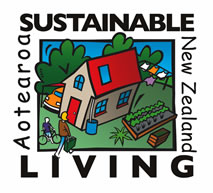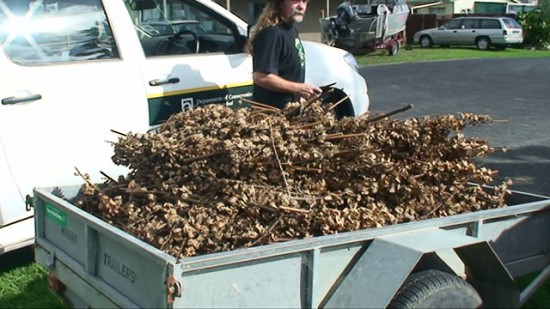![]()

Mr Rifkin's comments met with both support and scepticism at the meeting
|
Economist Jeremy Rifkin galvanised the Research Connections 2009 conference in Prague with a roadmap to simultaneously solve the economic and energy crises.
He proposed a pan-European strategy of small-scale energy generation and smart energy grids that make everyone a partner in energy.
What is more, he said, the plan would create millions of jobs and foster investment that would see the end of the current economic crisis.
Mr Rifkin leads a roundtable of 100 top CEOs and government officials who have subscribed to the plan.
The roundtable is part of the Foundation on Economic Trends, which Mr Rifkin founded.
He said old economic models will not see humanity through, and the combination of the climatic, energy and economic woes of the planet created a "perfect storm" that will see in a new era for its inhabitants.
But such a revolution is not unique to human history, he said.
"The great economic revolutions in history occur when two things happen," he explained.
"First, we humans change the way we organise the energy of the Earth; we've done this frequently over the course of our history.
"Second, and equally important, we change the way we communicate to organise new energy regimes. When energy revolutions converge with communication revolutions, those are the pivotal points in human history."
|
Jeremy Rifkin
|
The current renewable energy push, in common with the information and communication technology revolution that characterised the 1990s, is just such a pairing of regime changes.
But in Mr Rifkin's grand plan, every citizen of the EU would participate in order to revolutionise the way energy is generated, used, and monetised.
Four pillars
Although the sheer scope of the idea raised eyebrows throughout the room, Mr Rifkin laid out a cogent, four-part plan that he said could in one stroke dispel the perfect storm he described.
The first two pillars of the plan were a call to technological arms: further develop renewable energy technologies' efficiencies, amplify production to access "economies of scale", and develop means to store the intermittent energy they harvest.
The third pillar is a common idea writ very large indeed. He called for a pan-European commitment to microgeneration - small installations of renewable energy technology work in place of, for example, vast wind farms - but on every single building already up or yet to be built.
"We cannot build enough centralised wind and solar parks to run Europe," he said.
"If this energy is distributed over every square foot all over the world, why would we collect it only at a few points? The problem is we're using 20th century, centralised, top-down business models."

The large-scale, centralised nature of power generation may be changing
|
Instead, Mr Rifkin suggested overhauling the technology of infrastructure and architecture such that buildings have integral power generation: solar panels and small vertical wind turbines on roofs, heat pumps harvesting geothermal energy in basements.
In rural settings, agricultural waste could be used to generate methane and in coastal regions, tidal power could be harvested.
"Your building becomes your power plant, just like your computer becomes your information vehicle to the world. Every home, factory, industrial park, every building is converted," he explained.
While existing buildings could generate a sizeable fraction of their energy demands, new buildings would be "positive power" - generating more than they need through grand changes in building materials and architecture.
Jump-start
Such an idea is not new; in fact, installations are already underway. Mr Rifkin cited car maker GM's Opel factory in Zaragoza, Spain, which sports a $78m (£52m) solar panel array.
It produces some 10 Megawatts of power, which means the energy savings could pay for the installation in just nine years.
Elsewhere in Spain, Navarra and Aragon have, in the past 10 years, moved to generating 70% of their energy with renewables.
Using wind turbines in the Pyrenees, hydroelectric generation from snowmelt, and sun-tracking solar arrays, Aragon will be 100% self-sufficient in six months and be in energy surplus in six more.
"Everyone can do that tomorrow," Mr Rifkin emphasised. Moreover, it is a handy way out of an economic abyss.
"If you want to jump-start an economy it's always about construction. You jump-start not hundreds of thousands of jobs building solar collectors, but millions of jobs reconverting the entire infrastructure."
The scale of the proposed changeover is unconvincing for Paul Ekins, professor of energy and environment policy at King's College London.
"People tend to want power when they demand it and they tend to want it to be there all the time," he told BBC News.
"It's certainly possible that microgeneration has a role to play in the future energy system, but my view is that central generation is likely to be a very important part of satisfying that demand."
'Distributed capitalism'

Each homeowner could become a small player in the European energy market
|
The fourth pillar of the plan would make everyone a stakeholder in the scheme by overhauling the outdated power grid system.
"We're going to use the same tecnology that created the internet; we take the power grid of the EU and turn it into an 'intergrid' that works just like the internet.
"Say you're producing 30% of your energy need, it's peak period in the middle of the day and you don't need the electricity. If millions of people send just a little bit back to the grid, peer-to-peer just like we send information on the internet, that's distributed power."
But the distributed computing allowed by the revamped power grid could introduce a new economic paradigm - what Mr Rifkin calls "distributed capitalism".
"The main grid [will be] completely distributed, software connected to sensors connected to every appliance in your home: thermostat, washing machine, toaster, everything.
"At any one time the system will know what every washing machine is doing in Europe. If you have peak demand, not enough supply, software can say to two million washing machines 'forget the extra rinse'.
"If you bought the program - it's all voluntary - you get a cheque at the end of the month or a credit from the electricity company."
Like microgeneration, the idea of such "smart grids" has been circulating in the energy community for some time. But it is the sheer scope of all facets of Mr Rifkin's plan that makes it unique.
He has formed the "Third Industrial Revolution Roundtable" with 100 leaders from industry - big names such as IBM and BASF are on the list - as well as governments to further promote the idea.
And he is sure that the EU will continue to lead the way, citing the "golden goose" of the union: it is the largest internal market economy in the world, making it particularly poised to undertake such an ambitious plan.
Professor Ekins wonders about the likelihood that all the facets such a long-term, high-investment initiative is what the future holds.
"The world has room for visionaries," he said, "and one of the characteristics of visionaries is that their total vision very rarely comes true.
"Normally the future ends up having some aspect of different competing visions."









